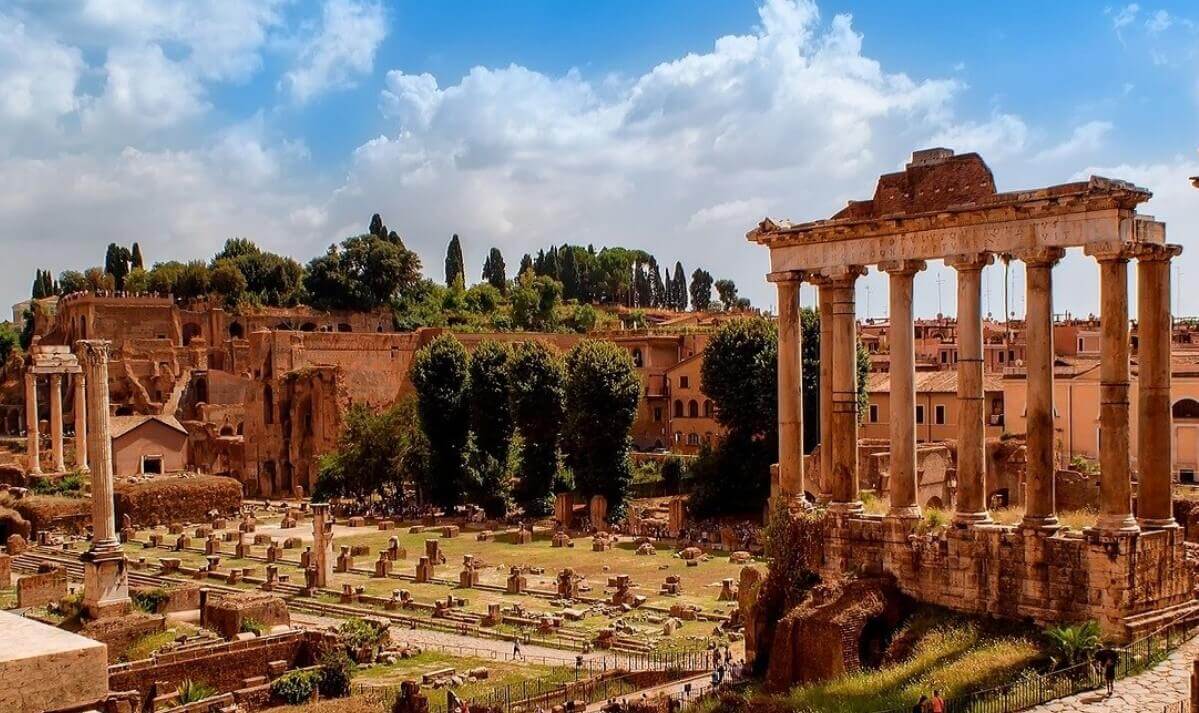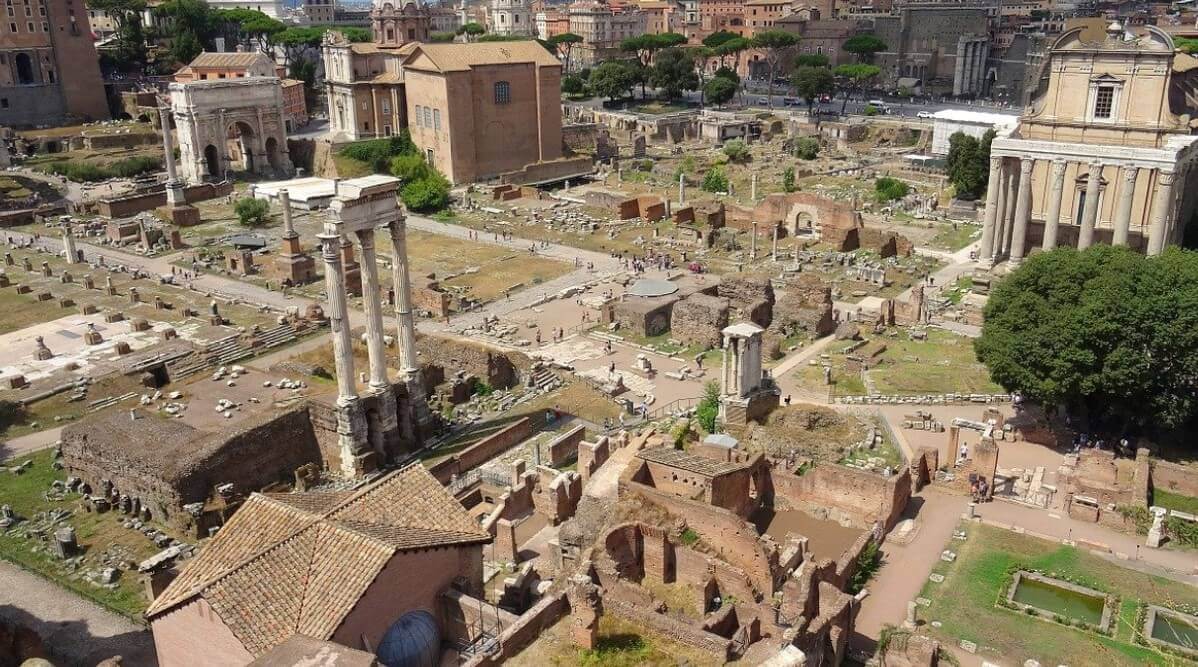
Visit Black Stone Forum Rome: The Lapis Niger
In Ancient Rome, the open air meeting space was known as the Comitium. Here, voting was done and assemblies met to discuss the business of the day. This was the place where decisions were made!
The Lapis Niger was a shrine within the Comitium. It is one of the only surviving parts of the structure, however it can be hard to see as it is located underground. Today, it can be found within the wider complex of the Roman Forum.
Contents
What was the Lapis Niger?
The topic of today’s article is a black stone located in the site of the Comitium. It is thought to have been an altar, and has references inscribed on it dating back to 550 BC. No one really knows the origins.
Some theory exists that it was constructed by Julius Caesar, but it can’t be proven for sure. Others say it is the resting place of Romulus – one of Rome’s founders.
The history of the Lapis Niger

It is clear that the stone and altar carried enormous weight as a shrine for the very early Roman Empire. Even when it fell out of use, subsequent generations still revered the area. But no one really understood what it was all about.
Finally, the area was excavated and explored in the late 19th century. Archeologists then discovered the shrine was actually built on some even more ancient artefacts several feet below. So, it has always been a bit of a mystery.
Details about the Black Stone Latin inscription

On the supporting stone pillars is wording that dates to 550 BC. The writing is a real muddle, written in a style known as Boustrophedon. Basically, some lines are written left to right, and others right to left! It was apparently a style of writing common in Ancient Greece and can be seen in other manuscripts from the period.
On top of that confusion, parts of the inscription on the supporting pillars are missing. The top and the bottom to be precise. Missing the beginning and the end of a story is pretty critical! Numerous historians and linguists have attempted to work out what the writing says, and have managed to piece together some sort of a meaning.
Thoughts on the inscription
The general consensus is that the inscription is a threat of a curse. This would happen to anyone who violates the sanctity of the stone. It is also understood to contain some information on local laws of the time. The inscription can be found on the pillars underneath the slab.
How to see this Archaic Latin Alphabet
Very unfortunately, the stone and its meaning may continue to remain a mystery. Because it is currently not even possible to see it! The stone is protected by coverings, and is continually undergoing renovation or excavation.
The world’s oldest latin inscription might not be seen by public eyes for a long time. It’s also underground. It seems the custodians are keen to keep it well protected for now.
What else can you see around the Lapis Niger?

Never worry, there are plenty of things to see near and around the area of the Roman Forum. Once you have taken a look here, team your visit to the forum with a trip to the Colosseum.
Also, within the Roman Forum there are so many ancient attractions. Follow the Via Sacra – the main thoroughfare – and check out the Temple of Julius Caesar for example.
Or visit the reconstruction of the Curia. The Roman Forum is a massive site full of historical treasures, make sure you do your research before you go, or hire a guide to make the most of the experience.
Want to see the Lapis Niger in video
If you want to see a bit more of this strange attraction, then check out this great short video from the Open University. You can get a real sense of the history, and what the area looks like before your visit.
Frequently asked questions about the Lapis Niger

Why was the Lapis Niger built?
Locals say that the Lapis Niger was built on the resting place of Romulus.
How old is the Lapis Niger?
Based on the inscriptions, it is understood the Lapis Niger dates back to 550BC.
Who found the Lapis Niger and how?
In 1899, archeologists began work on excavating the area. The Lapis Niger was discovered during this work by the team.
Conclusion
This interesting part of Roman history may forever remain a mystery. Nevertheless, what we do know about it is fascinating. Located right in the heart of Ancient Roman political life, it was for sure of huge significance to the population at the time. Make sure you visit the area as part of your trip to the Roman Forum and the Colosseum. For more tips – check out our main page here.
Fanny, an ardent admirer of ancient history and architecture, has been fascinated by the Colosseum since her first visit to Rome in 2012. As a key contributor to the Visit Colosseum Rome blog, she brings her passion for the Roman Empire’s monumental legacy to every article and guide.
